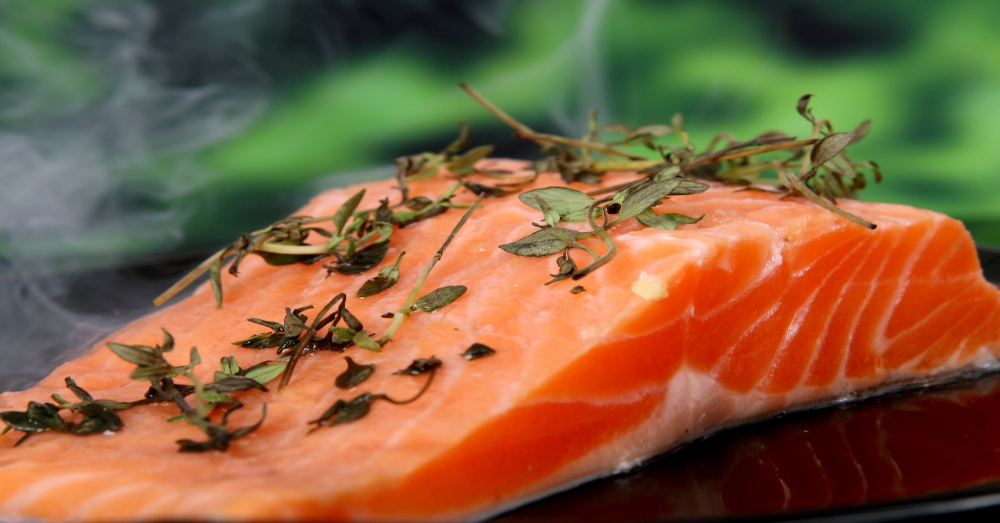
Why Farmed Salmon Are a Toxic ‘Junk Food’
If you’re aware of the health benefits of animal-based omega-3 fats and the fact that salmon is a great source, you may be shocked to discover that farmed salmon has more in common with junk food than health food. This is the grim reality revealed in Nicolas Daniel’s documentary “Fillet-Oh-Fish,” which includes exclusive footage from fish farms and factories across the globe.
March 24, 2018 | Source: Mercola.com | by Dr. Joseph Mercola
If you’re aware of the health benefits of animal-based omega-3 fats and the fact that salmon is a great source, you may be shocked to discover that farmed salmon has more in common with junk food than health food. This is the grim reality revealed in Nicolas Daniel’s documentary “Fillet-Oh-Fish,” which includes exclusive footage from fish farms and factories across the globe.
Among the experts featured is Kurt Oddekalv, a respected Norwegian environmental activist who claims salmon farming is an unmitigated disaster, both from an environmental and human health perspective. Below the salmon farms dotted across the Norwegian fjords is a layer of waste some 15 meters (49.2 feet) deep, teeming with bacteria, drugs and toxic pesticides, and since the farms are located in open water, this pollution is in no way contained.
Farmed salmon also pose a more direct toxic threat to your health. Fish has always been considered a health food, but food testing reveals that today’s farmed salmon is one of the most toxic foods in the world. As noted by the producers of the film, “through intensive farming and global pollution, the flesh of the fish we eat has turned into a deadly chemical cocktail.”1
In a global assessment of farmed salmon published in the January 2004 issue of Science,2 13 persistent organic pollutants were found. Farmed salmon also does not have the nutritional profile of wild salmon. Rather than being a wonderful source of much-needed omega-3 fats, farmed salmon contains far more omega-6 than omega-3, which can have deleterious health ramifications, seeing how most people are deficient in omega-3 while getting far more omega-6 than they need.
Salmon Farming Is Not a Green Solution
More than half of the fish Americans eat now comes from fish farms.3 Aquaculture promotes itself as a sustainable solution to overfishing, but in reality, fish farms cause more problems than they solve. For starters, it takes 1.5 to 8 kilograms of wild fish to produce just 1 kilogram of farmed salmon, so the aquaculture industry is actually contributing heavily to the depletion of wild fish stocks rather than saving it.4
A salmon farm can hold upward of 2 million salmon in a relatively small amount of space. As with land-based factory farms where animals are kept in crowded conditions, fish farms are plagued with diseases that spread rapidly among the stressed fish. According to Oddekalv, sea lice, pancreas disease5 and infectious salmon anemia virus have spread all across Norway, yet consumers have not been informed of these fish pandemics, and sale of diseased fish continues unabated.
A number of dangerous pesticides are used to stave off disease-causing pests, one of which is known to have neurotoxic effects. Workers who apply the pesticide must wear full protective clothing, yet these chemicals are dumped right into open water.
The pesticides used have also been shown to affect fish DNA, causing genetic mutations. Disturbing examples of deformed cod are shown, and estimates suggest about half of all farmed cod are deformed in this fashion. What’s worse, female cod that escape from farms are known to mate with wild cod, spreading the genetic mutations and deformities into the wild population.
Nutritional Content of Farmed Fish Is Very Different From Wild Salmon
Farmed salmon suffer less visible but equally disturbing mutations. The flesh of the farmed salmon is oddly brittle and breaks apart when bent — a highly abnormal feature. The nutritional content is also wildly abnormal. Wild salmon contain about 5 to 7 percent fat, whereas the farmed variety can contain anywhere from 14.5 to 34 percent. For a visual demonstration of this difference in fat content, check out the video above.
The elevated fat content is a direct result of the processed high-fat feed that farmed salmon are given. But farmed salmon don’t just contain more fat overall; the real tragedy is the radically skewed ratios of omega-3 to omega-6 fats.6 Half a fillet of wild Atlantic salmon contains about 3,996 milligrams (mg) of omega-3 and 341 mg of omega-6.7 Half a fillet of farmed salmon from the Atlantic contains just a bit more omega-3 — 4,961 mg — but an astounding 1,944 mg of omega-6;8 more than 5.5 times more than wild salmon.
While you need both omega-3 and omega-6 fats, the ratio between the two is important and should ideally be about 1-to-1. The standard American diet is already heavily skewed toward omega-6, thanks to the prevalence of processed foods, and with farmed salmon, that unhealthy imbalance is further magnified rather than corrected.
Farmed and Dangerous9 provides an example of a salmon feed label, and the ingredients are very telling in terms of where these excess omega-6 fats are coming from. The first nine ingredients in Skretting’s “Winter Plus 3500″ salmon feed are poultry meal, fish meal, poultry fat, fish oil, whole wheat, soybean meal, corn gluten meal, feather meal and rapeseed oil. These are all ingredients that no wild salmon has ever encountered and is about as far from a species-appropriate diet as you can get.
